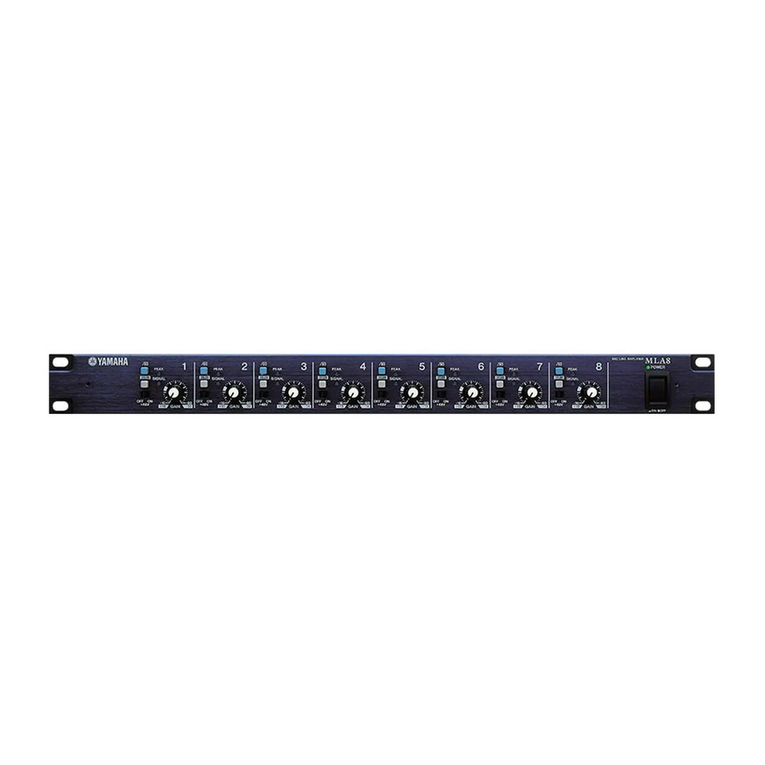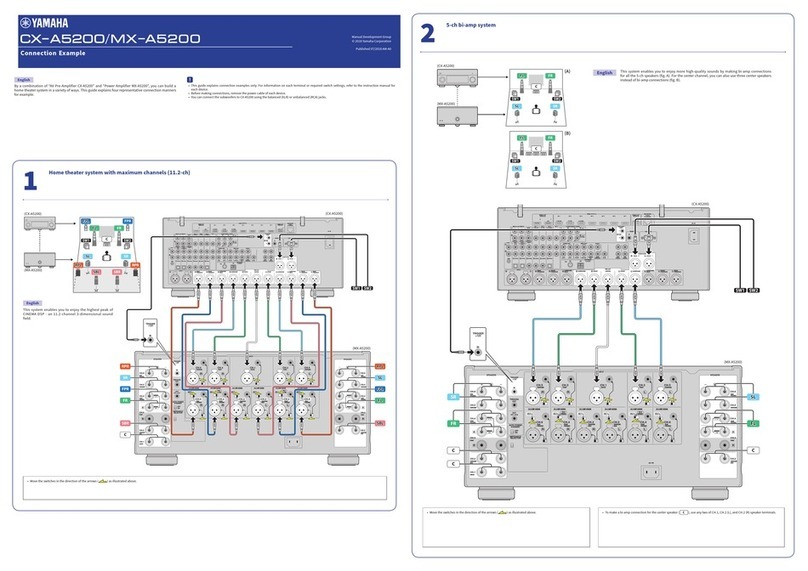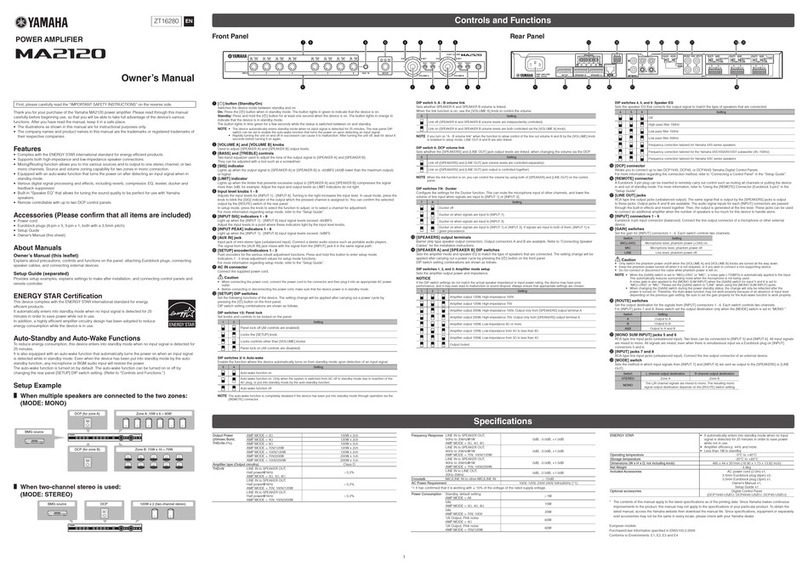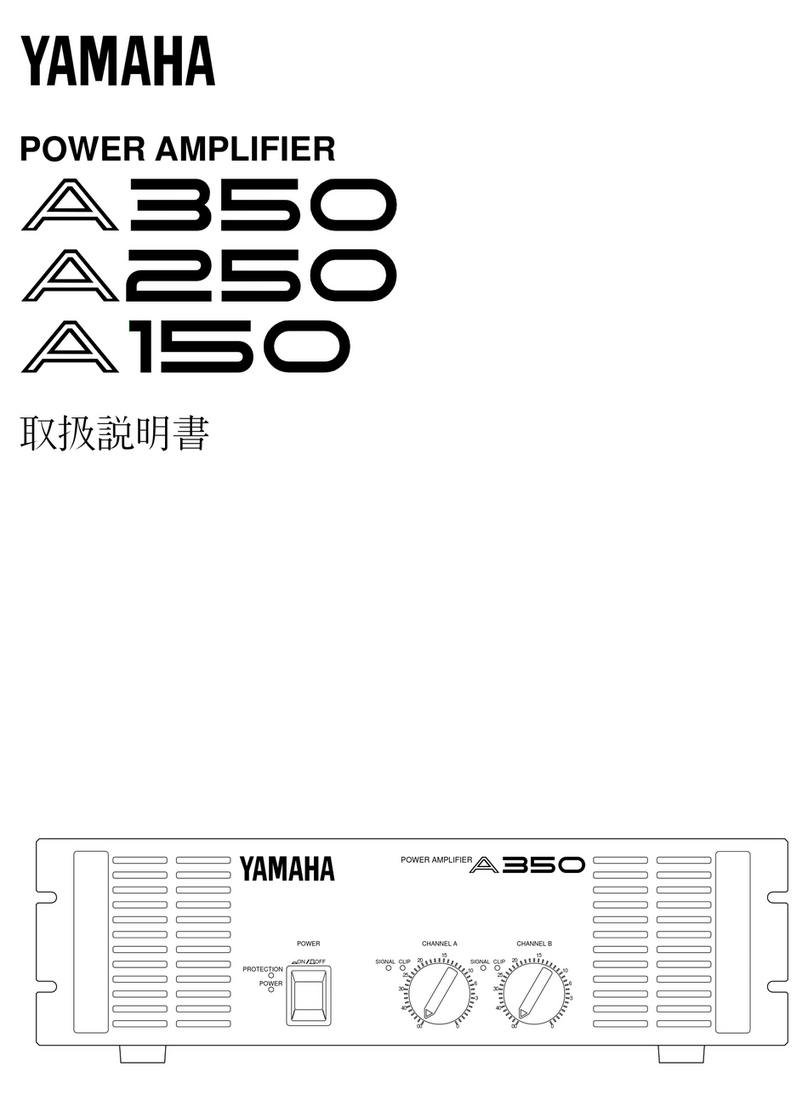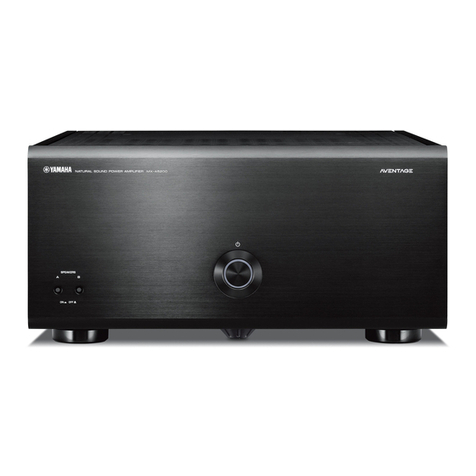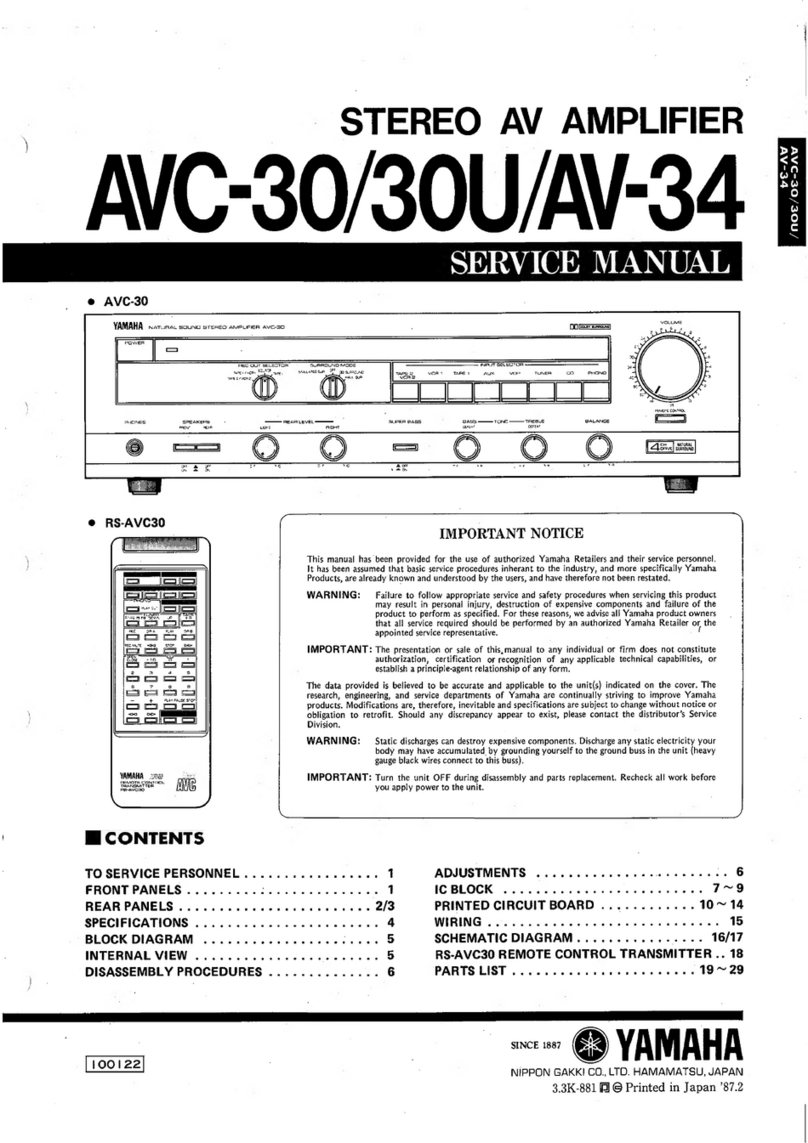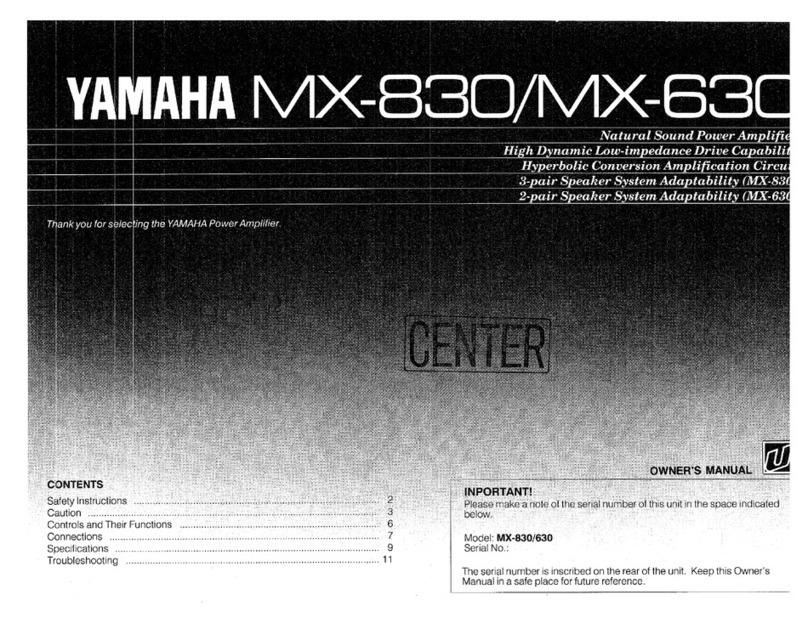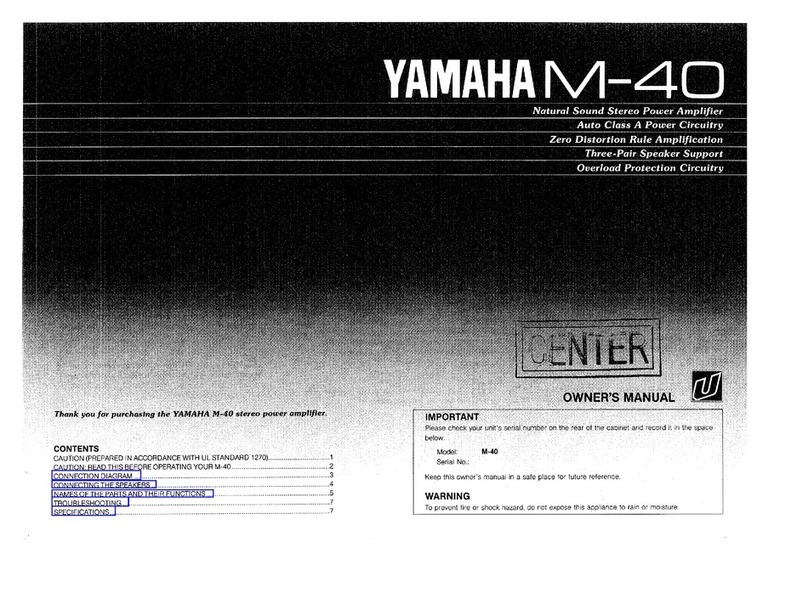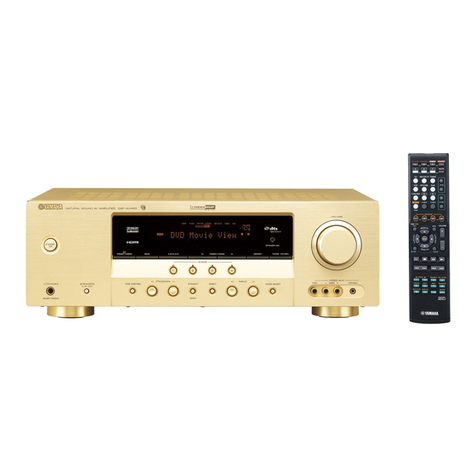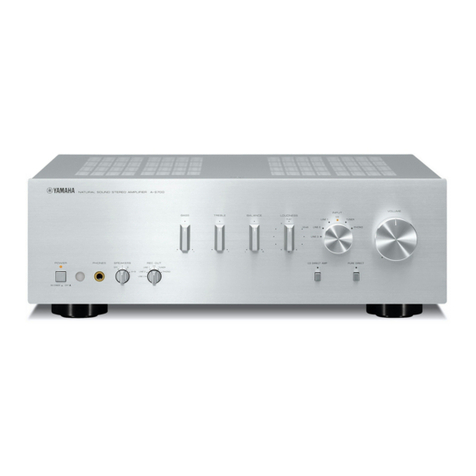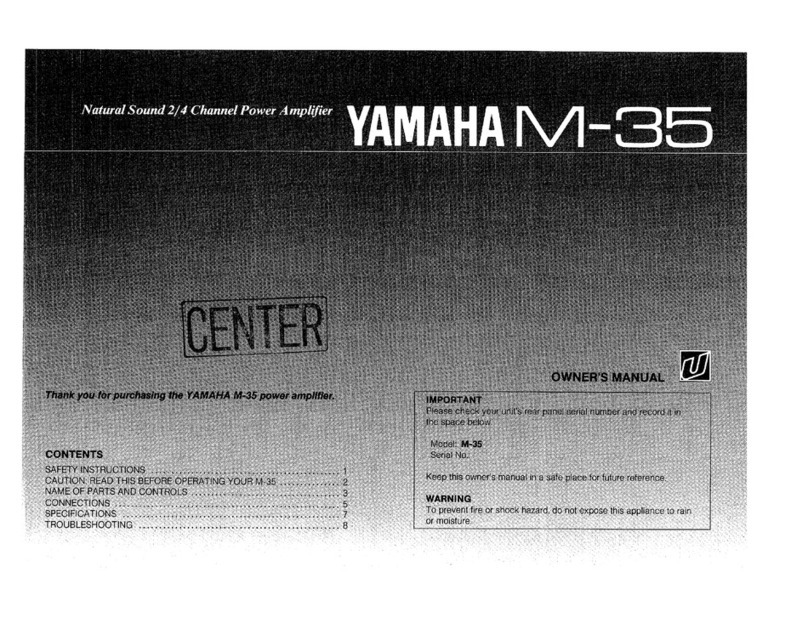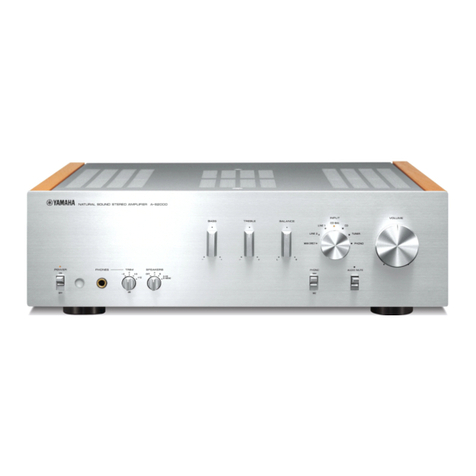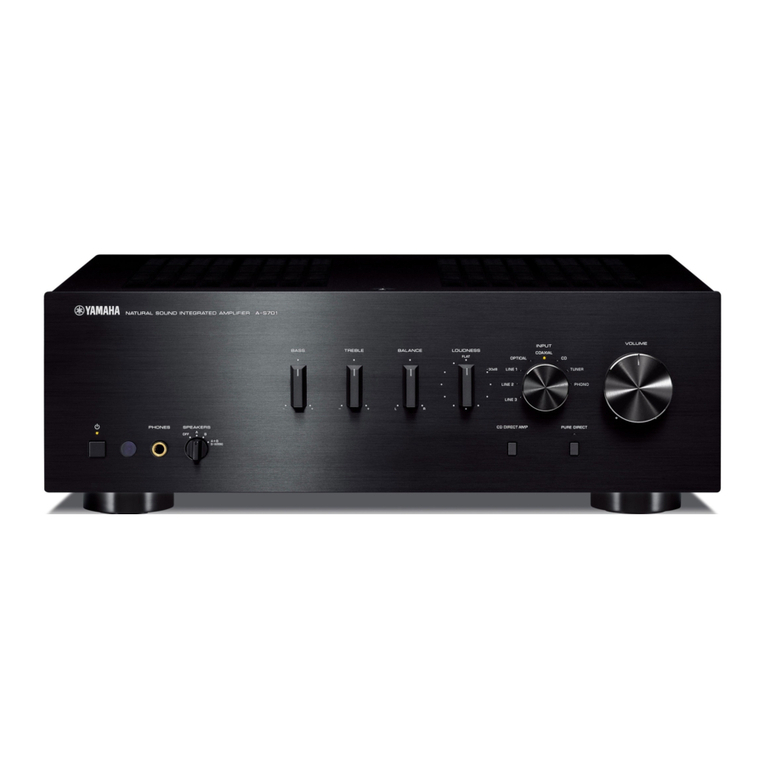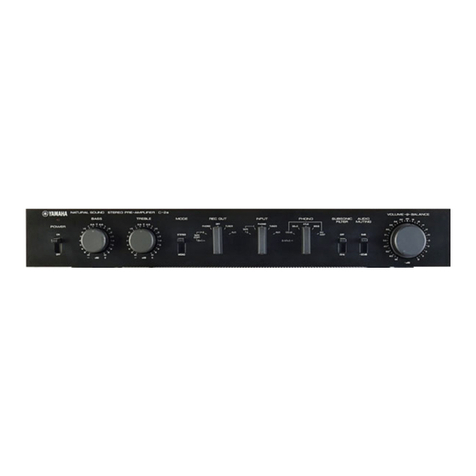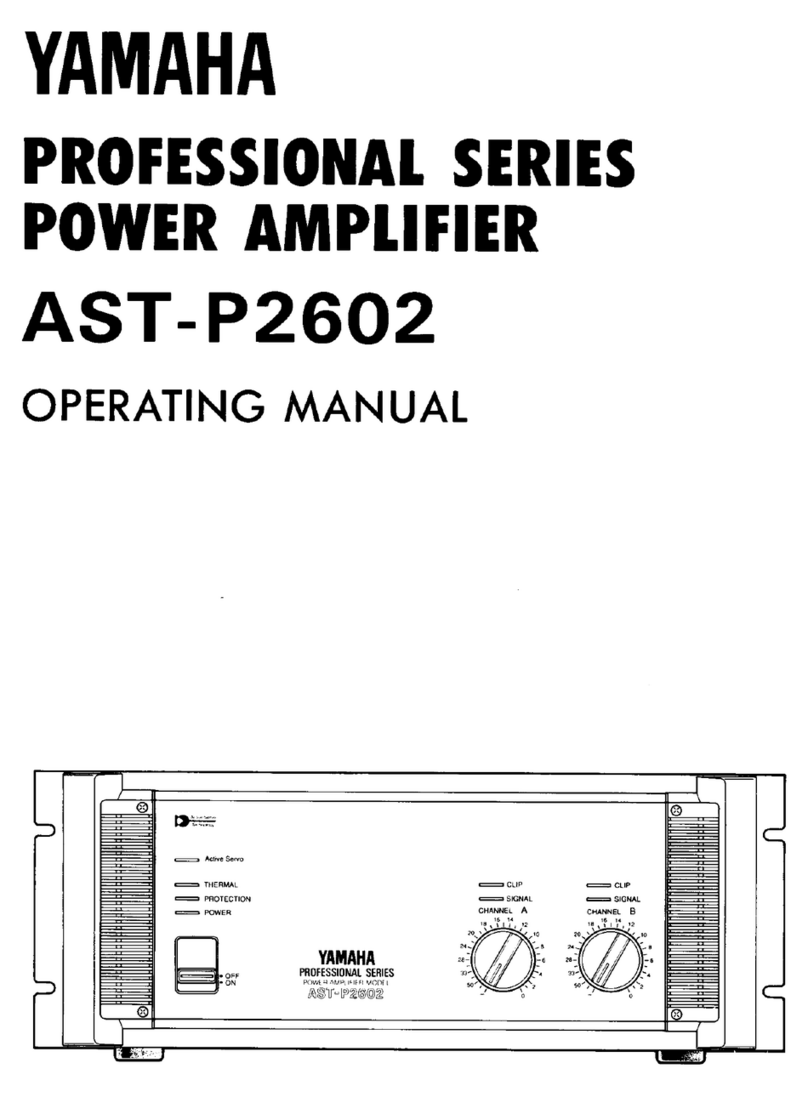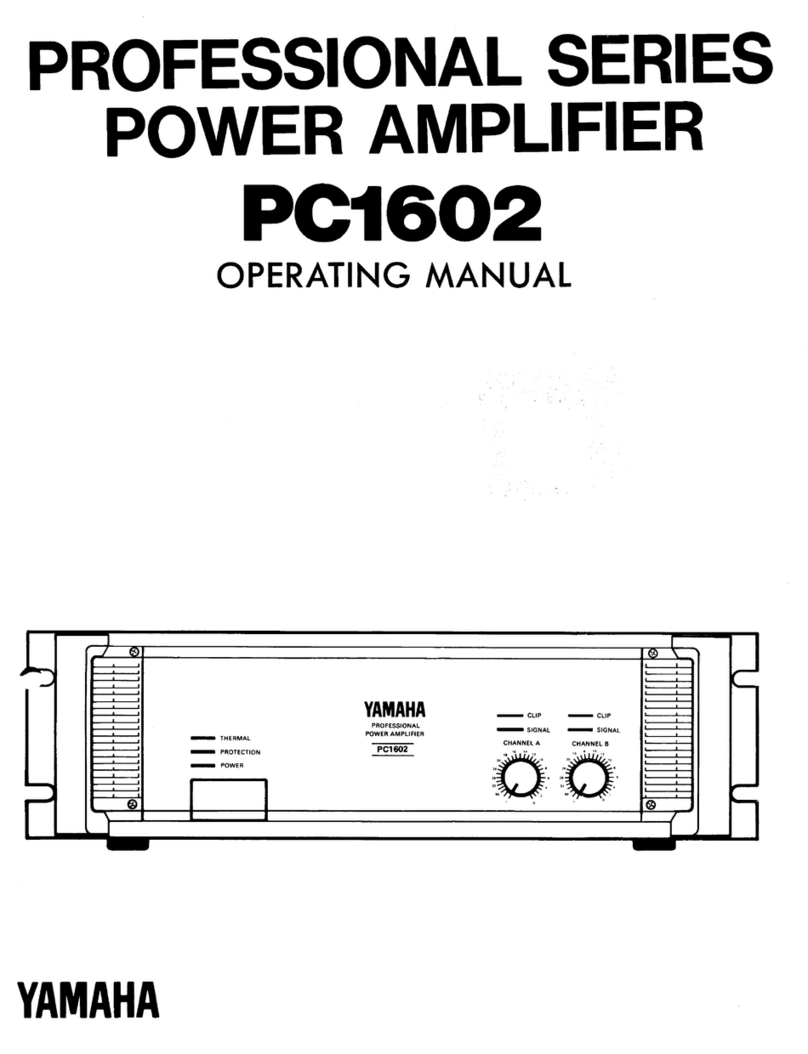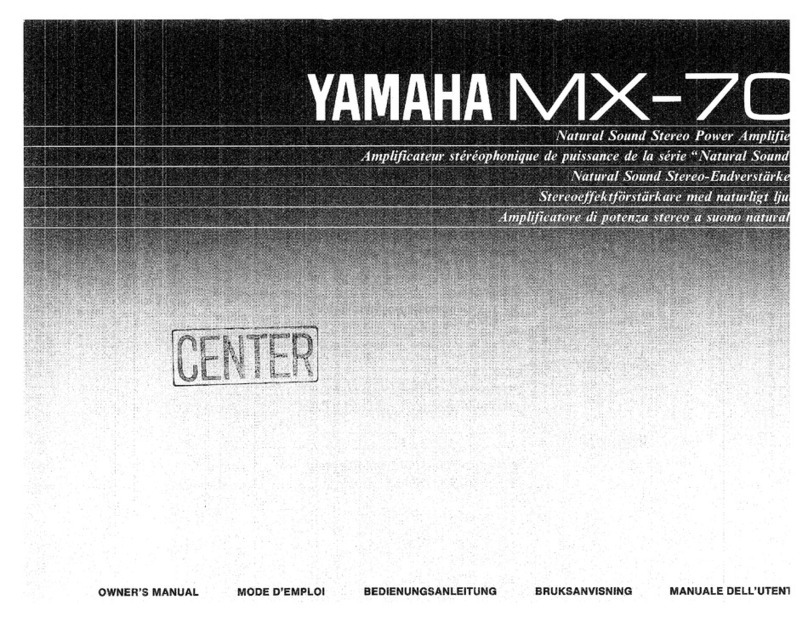
Important Information
i
CP2000—Owner’s Manual
Important Information
Please read the following before using the CP2000
Warnings
• Do not allow water to enter this unit or allow the unit to become wet. Fire or electrical
shock may result.
• Connect this unit’s power cord only to an AC outlet of the type stated in this Owner’s
Manual or as marked on the unit. Failure to do so is a fire and electrical shock hazard.
• Do not scratch, bend, twist, pull, or heat the power cord. A damaged power cord is a
fire and electrical shock hazard.
• Do not place heavy objects, including this unit, on top of the power cord. A damaged
power cord is a fire and electrical shock hazard. In particular, be careful not to place
heavy objects on a power cord covered by a carpet.
• Do not place a container with liquid or small metal objects on top of this unit. Liquid
or metal objects inside this unit are a fire and electrical shock hazard.
• If you notice any abnormality, such as smoke, odor, or noise, or if a foreign object or
liquid gets inside the unit, turn it off immediately. Remove the power cord from the AC
outlet. Consult your dealer for repair. Using the unit in this condition is a fire and elec-
trical shock hazard.
• Should this unit be dropped or the cabinet be damaged, turn the power switch off,
remove the power plug from the AC outlet, and contact your dealer. If you continue
using the unit without heeding this instruction, fire or electrical shock may result.
• If the power cord is damaged (i.e., cut or a bare wire is exposed), ask your dealer for a
replacement. Using the unit with a damaged power cord is a fire and electrical shock hazard.
• Do not remove the unit’s cover.You could receive an electrical shock. If you think inter-
nal inspection, maintenance, or repair is necessary, contact your dealer.
• Do not modify the unit. Doing so is a fire and electrical shock hazard.
Cautions
•When rack-mounting the unit, allow enough free space around the unit for normal
ventilation. This should be: 10 cm behind, and 2 cm above.
For normal ventilation during use, remove the rear of the rack or open a ventilation hole.
If the airflow is not adequate, the unit will heat up inside and may cause a fire.
•This unit has ventilation holes at the front and rear to prevent the internal temperature
rising too high. Do not block them. Blocked ventilation holes are a fire hazard.
•Clean the contacts of the phone plug before connecting it to the SPEAKERS jack of this
unit. Dirty contacts may generate heat.
•Use only speaker cables when connecting speakers to amplifier outputs. Using other
types of cables is a fire hazard.
•Hold the power cord plug when disconnecting it from an AC outlet. Never pull the
cord. A damaged power cord is a potential fire and electrical shock hazard.
•Do not touch the power plug with wet hands. Doing so is a potential electrical shock
hazard.
•Do not use this amplifier for any purpose other than driving loudspeakers.
